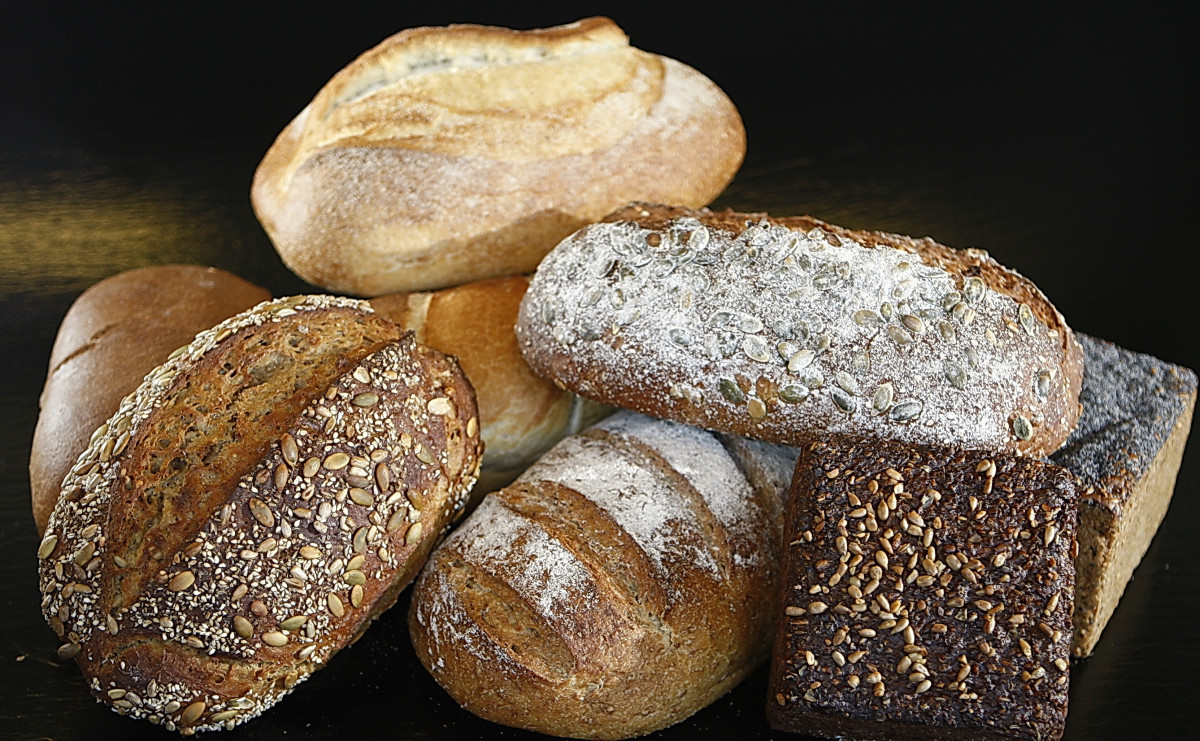Your cart is currently empty!

Bread is one of the oldest and most widely consumed foods across the world, with various types available to suit different tastes and preferences. Among the many bread varieties, two of the most popular are sourdough and regular bread (often referred to as yeast bread). While both types share some common ingredients like flour, water, and salt, they differ significantly in terms of their preparation, flavor, texture, and health benefits. Let’s dive into the key differences between sourdough and regular bread, exploring their unique characteristics, methods of preparation, and the reasons why sourdough has earned its place as a beloved artisanal bread.
1. Leavening Agent
The most significant difference between sourdough and regular bread lies in their leavening agents—the substances that cause the dough to rise.
- Sourdough Bread: Sourdough is leavened using wild yeast and lactic acid bacteria, both of which occur naturally in the environment. These microorganisms are cultivated in a mixture of flour and water known as a starter. The wild yeast ferments the sugars in the dough, while the bacteria produce lactic acid, contributing to the bread’s signature tangy flavor. This fermentation process can take several hours or even days, depending on the specific recipe and desired results.
- Regular Bread (Yeast Bread): In contrast, regular bread is typically leavened using commercial yeast, a highly concentrated form of yeast that has been cultivated for quick fermentation. Commercial yeast allows for a faster rise compared to wild yeast, usually taking only a couple of hours for the dough to double in size. Unlike sourdough, regular bread doesn’t rely on bacteria for flavor development and is often a more neutral-tasting loaf.
2. Flavor Profile
The flavor of the bread is greatly influenced by the type of leavening agent used, and this is one of the most noticeable differences between sourdough and regular bread.
- Sourdough Bread: The wild yeast and bacteria involved in sourdough fermentation create a complex, tangy flavor profile that sets it apart from regular bread. The lactic acid bacteria produce organic acids, primarily lactic acid and acetic acid, which give sourdough its distinctive sour taste. The longer the fermentation process, the more pronounced the tanginess. This makes sourdough bread a favorite for those who enjoy a bold, slightly tangy flavor with a depth of character.
- Regular Bread (Yeast Bread): Regular bread, made with commercial yeast, has a more neutral and slightly sweet flavor. The quick fermentation process doesn’t allow for the same level of flavor development, resulting in a milder taste. The focus of regular bread is on the texture and lightness, with the flavor often enhanced by added ingredients like sugar, butter, or oil. While it may not have the tanginess of sourdough, regular bread offers a soft, comforting taste that many people find appealing.
3. Texture and Crust
The texture and crust of bread are influenced by the fermentation process, as well as the ingredients used.
- Sourdough Bread: Sourdough typically has a chewy texture with a dense crumb, resulting from the longer fermentation period. The dough is usually more hydrated, leading to a slightly more open structure with larger air pockets. The crust of sourdough bread is typically thicker and crispy, often with a deep golden-brown color, thanks to the extended fermentation and the acids created during the process. The bread’s crust contributes significantly to its overall flavor, adding a bit of bitterness that complements the tanginess of the crumb.
- Regular Bread (Yeast Bread): Regular bread, especially varieties like white bread or sandwich bread, tends to have a softer texture with a finer crumb and smaller air pockets. This is due to the faster fermentation process and the use of commercial yeast. The crust of regular bread is usually softer as well, and it doesn’t develop the same depth of flavor as sourdough’s crust. While regular bread can still have a pleasant, slightly sweet aroma, it lacks the robust character that sourdough offers.
4. Preparation Time and Method
The preparation method and time required for sourdough and regular bread are also significant differences.
- Sourdough Bread: Making sourdough bread is a time-consuming process. The dough requires a starter, which is a mixture of flour and water that has been fermented with wild yeast and bacteria. Creating and maintaining the starter takes several days, as it needs to be fed regularly with fresh flour and water to ensure the microorganisms stay active. After the starter is ready, the dough must undergo a lengthy fermentation period—sometimes up to 24 hours or more—allowing the wild yeast and bacteria to work their magic. The slow fermentation process contributes to the unique flavor and texture of sourdough but requires patience and attention to detail.
- Regular Bread (Yeast Bread): Regular bread is much quicker to prepare, as it relies on commercial yeast to speed up the fermentation process. The dough is mixed, kneaded, and left to rise for a few hours, typically doubling in size within 1-2 hours. After that, it is shaped, proofed, and baked. The overall preparation time is much shorter compared to sourdough, making regular bread a convenient option for home bakers looking for a faster result.
5. Nutritional Profile and Health Benefits
Sourdough and regular bread both have nutritional benefits, but sourdough’s unique fermentation process may offer some advantages.
- Sourdough Bread: The lactic acid bacteria in sourdough not only contribute to its flavor but also enhance the bread’s digestibility and nutrient absorption. The fermentation process helps break down gluten and phytic acid, making it easier for the body to digest and absorb nutrients like iron and zinc. Additionally, sourdough has a lower glycemic index compared to regular bread, meaning it has a slower, more gradual effect on blood sugar levels. Some people with mild gluten sensitivities find sourdough easier to tolerate than regular bread due to the breakdown of gluten during fermentation.
- Regular Bread (Yeast Bread): Regular bread, particularly white bread, is often made with refined flour and may have a higher glycemic index, leading to quicker spikes in blood sugar. While it provides essential carbohydrates and some vitamins and minerals, it doesn’t offer the same level of nutritional benefits as sourdough. Whole grain varieties of regular bread may provide additional fiber and nutrients, but they still lack the complex benefits that sourdough’s natural fermentation process provides.
6. Shelf Life
The shelf life of sourdough and regular bread can vary, with sourdough generally lasting longer.
- Sourdough Bread: Thanks to its lower pH and natural preservatives created during fermentation, sourdough typically has a longer shelf life compared to regular bread. The acidity in sourdough helps inhibit the growth of mold, allowing it to stay fresh for several days without spoiling. In fact, many people find that sourdough actually improves in flavor after a day or two, as the tanginess deepens.
- Regular Bread (Yeast Bread): Regular bread, especially commercially-produced varieties, often has a shorter shelf life and can become stale or moldy more quickly. This is especially true for bread made with preservatives or those made with white flour, as the lack of acidity and preservatives can encourage mold growth and spoilage. However, storing bread in a cool, dry place or freezing it can help extend its shelf life.
Conclusion
Sourdough and regular bread may seem similar at first glance, but they are quite different in terms of their ingredients, preparation methods, flavor profiles, textures, and health benefits. Sourdough, with its wild yeast and bacterial fermentation, offers a tangy flavor, chewy texture, and potential health benefits like better digestibility and a lower glycemic index. On the other hand, regular bread, made with commercial yeast, is quicker to prepare, has a milder flavor, and is more convenient for those who prefer a soft, neutral-tasting loaf. Whether you’re drawn to the deep, complex flavors of sourdough or the light, airy texture of regular bread, both types of bread have a special place in the world of baking.

Leave a Reply